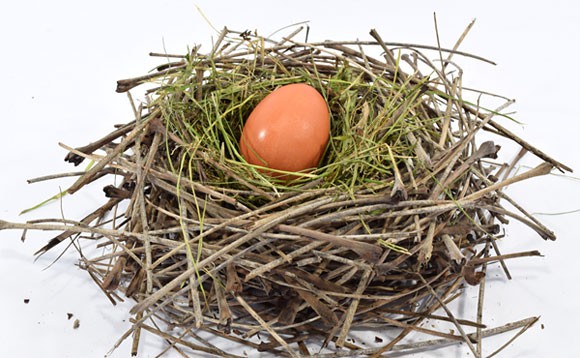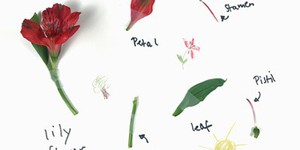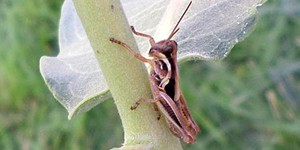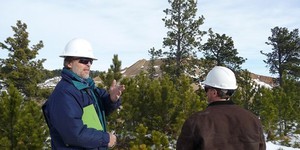Summary

Introduction
Different types of birds lay their eggs in different places. Some build tiny nests in bushes, some build enormous nests in tall trees. Some lay their eggs directly on the ground or on rocky ledges. Those that build nests use many different types of materials. In this project you will try to build your own bird nest using only natural materials that you can find outside. Can you do better than a bird?
Materials
- Eggs or small rocks that you can pretend are eggs
- Assorted natural materials that you find outside such as twigs, grass, leaves, dirt, rocks, sand, etc. The materials you have available will depend on where you live.
- Bucket or other container to collect materials
Prep Work
- This activity can get messy. If possible, do your work outside. If you are working inside, build your nest on a tray to make cleanup easier.
Instructions
- First, go outside to see if you can find any bird nests nearby. If you find one, observe it carefully from a distance—do not get too close and disturb the nesting birds! Can you tell what materials the nest is made of?
- If you can't find any bird nests outside, search for pictures of bird nests online. How many different types of nests can you find? What are the nests made out of?
- Now, look around you for materials you can pick up easily, like twigs and rocks. Think about the purposes different materials could serve.What materials do you think would make a good nest? Do any of them match the nests you saw in person or online?
- Use your bucket to gather a bunch of materials. Note that the bucket is a convenient time-saver for you, but birds don't have that luxury. They have to make many back-and-forth trips, often carrying one twig at a time!
- Now, use your materials to try and build a nest that will be able to safely hold at least one egg. This is an open-ended process—there is no single "correct" procedure to follow.
- "Test" your nest (gently at first!). Can you blow on it (or aim a fan at it), pick it up, or place an egg inside it? Does the nest fall apart or stay together? If it falls apart, what can you change to make it sturdier?
Cleanup
What Happened?
You might find that building a bird nest can be surprisingly difficult! If you just made a pile of dry materials like sticks or grass, your nest probably didn't stay together very well. It might fall apart if you blow on it or try to pick it up. You can make your nest much sturdier by weaving the materials together to form a basket, or using a binding material like mud as "glue" to hold the pieces together. Now the next time you see a bird nest, maybe you will be a little more impressed with these natural feats of engineering!
Digging Deeper
Depending on where you live, you might commonly see bird nests outside in the spring. In cities you might see them tucked along windowsills and building ledges, and in suburban or rural areas you can commonly find them in bushes or trees. If you look closely (without disturbing the nesting bird or the eggs!), you can probably see what materials the nest is made from. Some birds weave together grass and twigs to form a basket. Others might use binding materials like mud or even their own saliva to build or help support the nest. Depending on the location and climate of the bird's habitat, the materials birds use to build their nests might need to serve different purposes. For example, birds in a cold climate might line their nests with insulating materials like grass to help keep the eggs warm. Birds in a warmer climate might use rocks and seashells instead, because the gaps in between them allow better air flow to keep the eggs cool. Birds who build their nests on the ground might want to keep them well-camouflaged to help hide them from predators, and birds who build their nests in trees might need them to be sturdy so they don't get blown out by a gust of wind. This results in nests that are different sizes, shapes, colors, and made from different materials. No matter how they build their nests though, all birds have one thing in common—they have to rely on natural materials they can find outside. That made this project a little more difficult for you—you could not cheat by using materials like glue or tape!
Ask an Expert
For Further Exploration
- Some birds in cities must resort to building nests with garbage, like bits of plastic bag, string, or cloth, because they can't find enough natural materials like twigs, moss, or grass. Can you build a bird nest with artificial materials instead of natural materials? How do your two nests compare? See the Additional Resources section for an article with more information about this topic.










